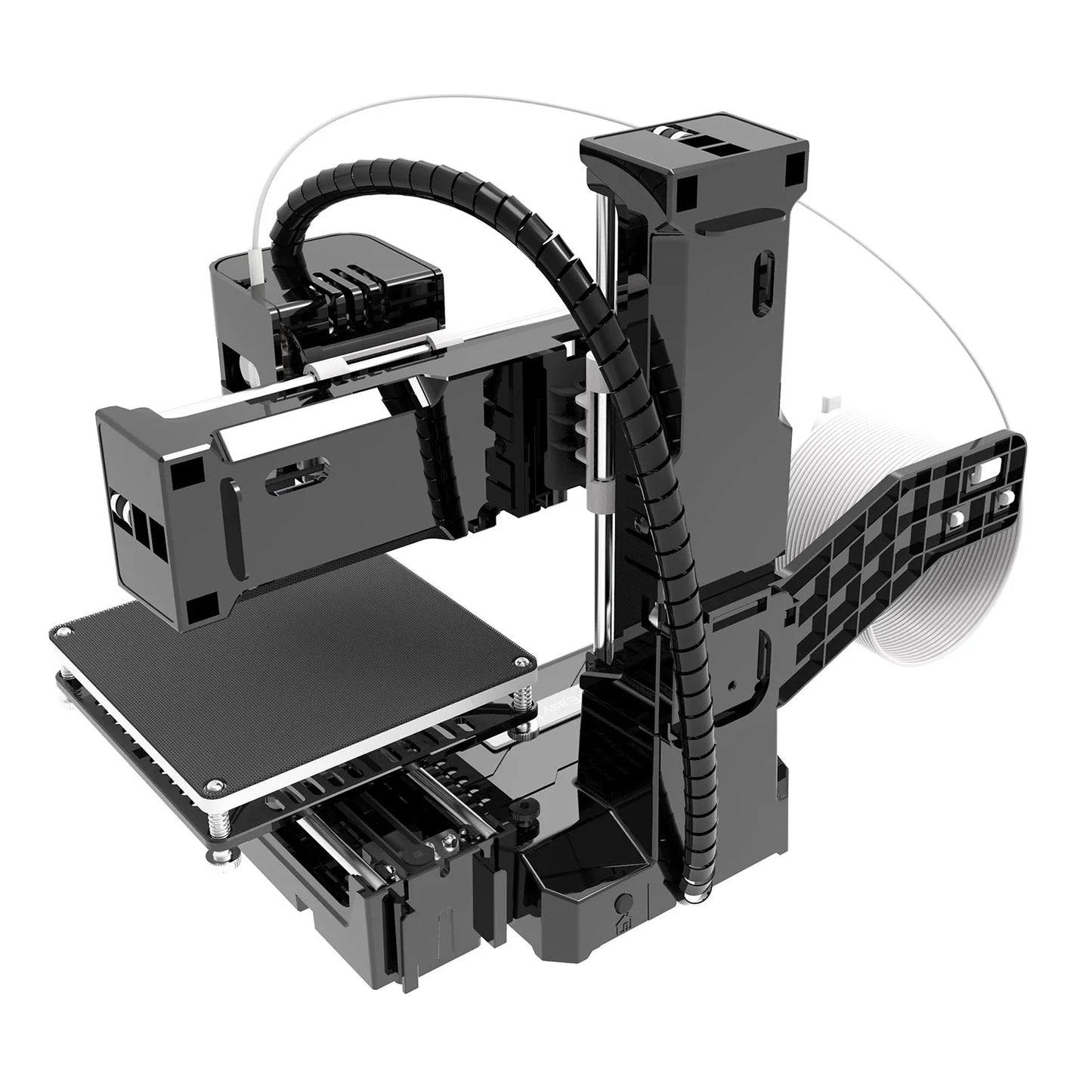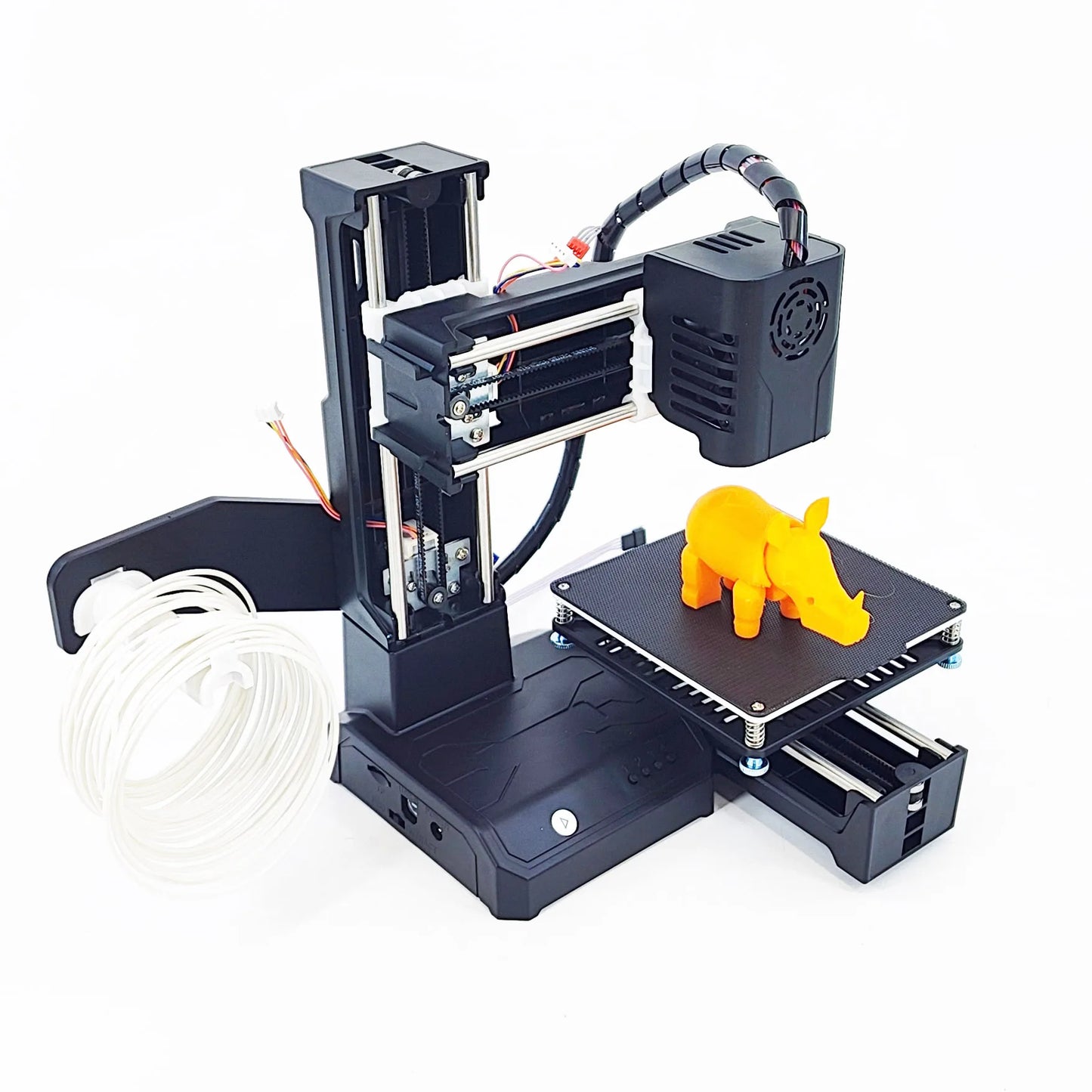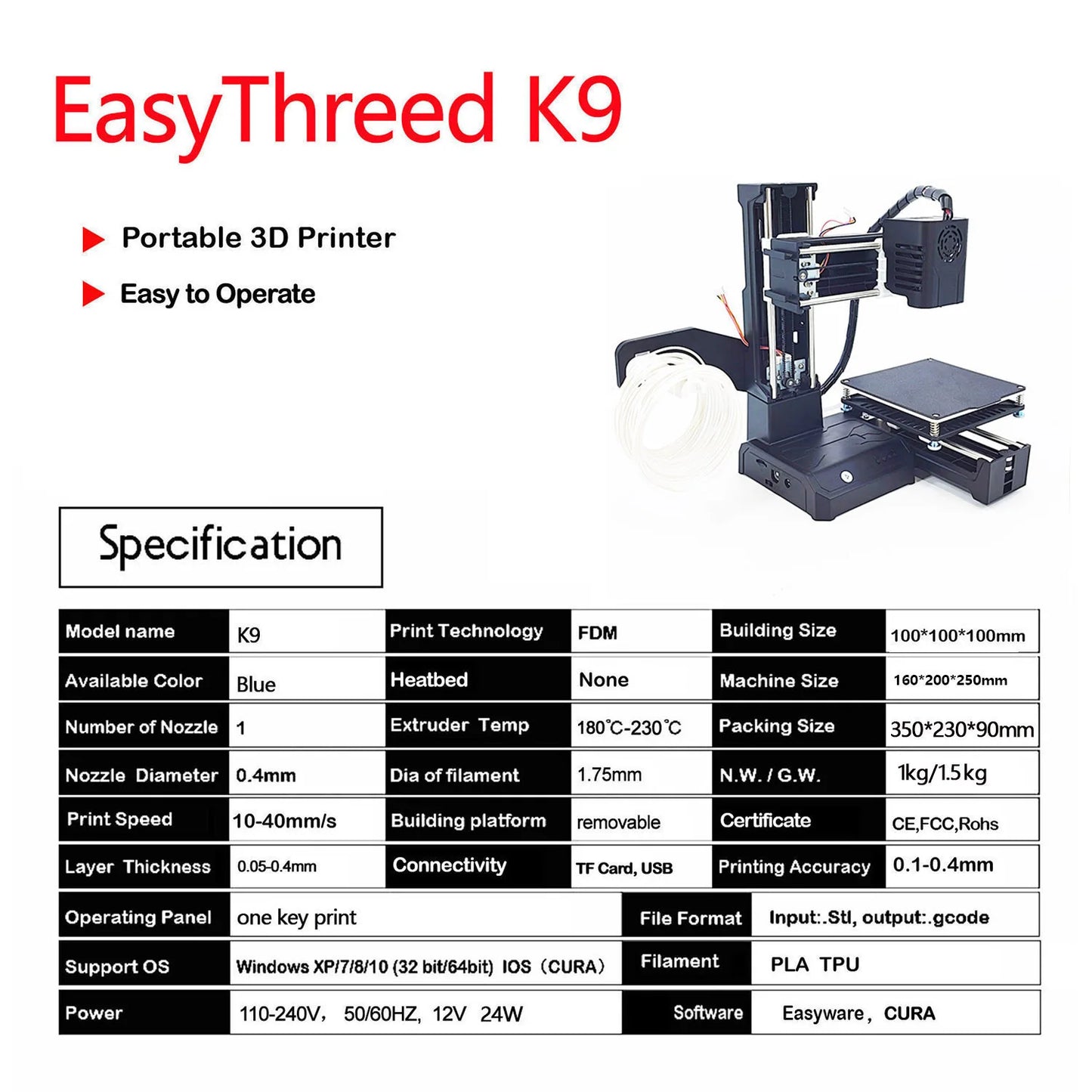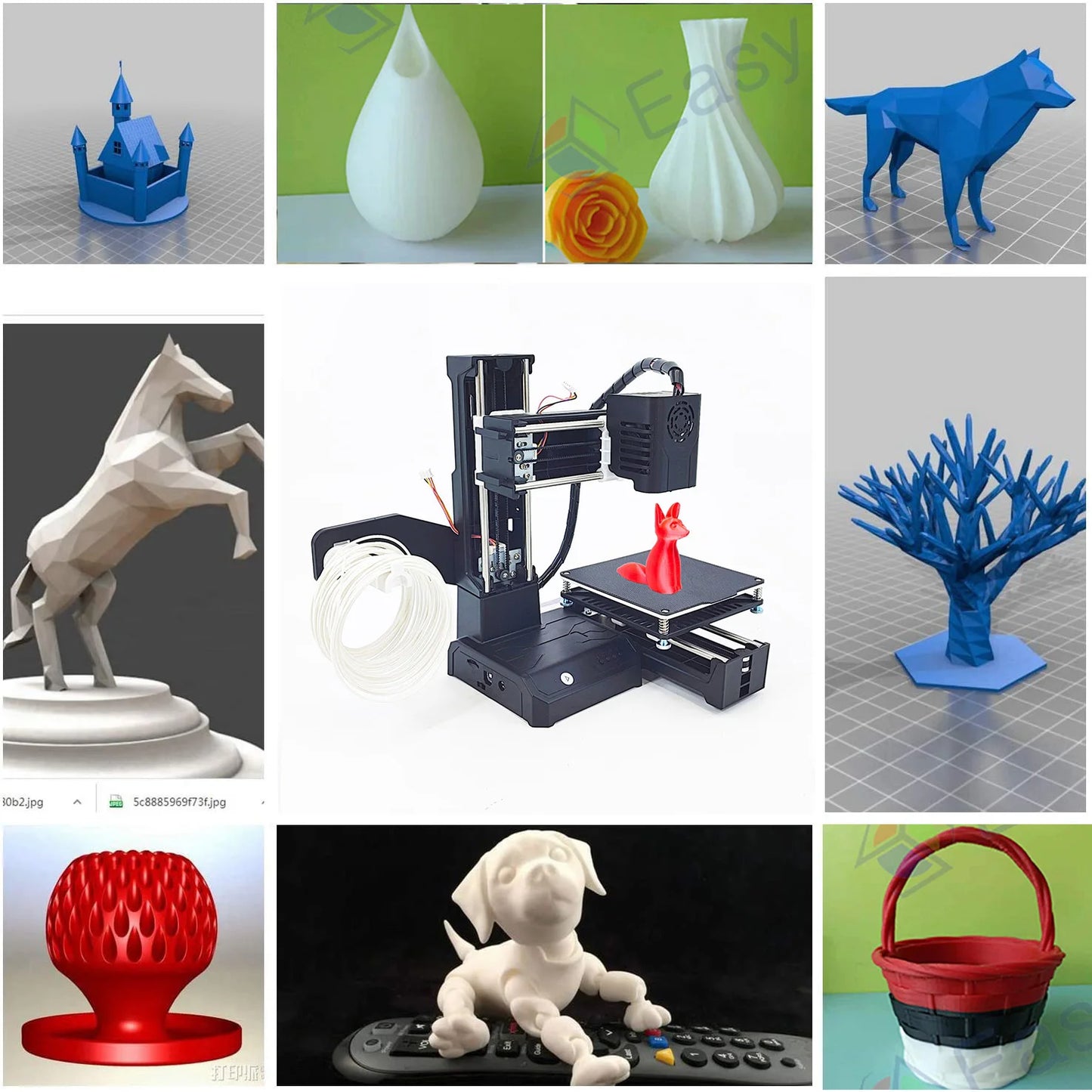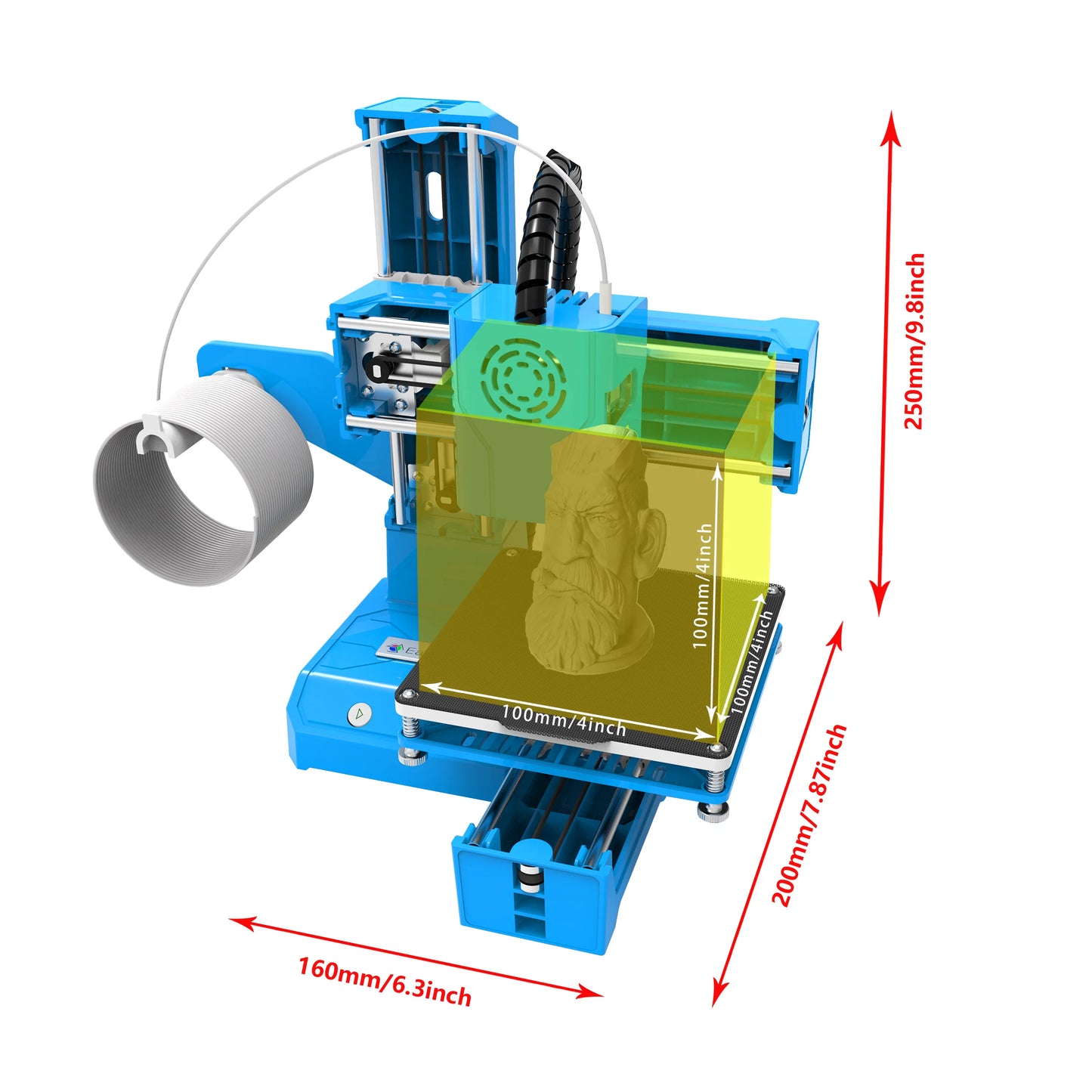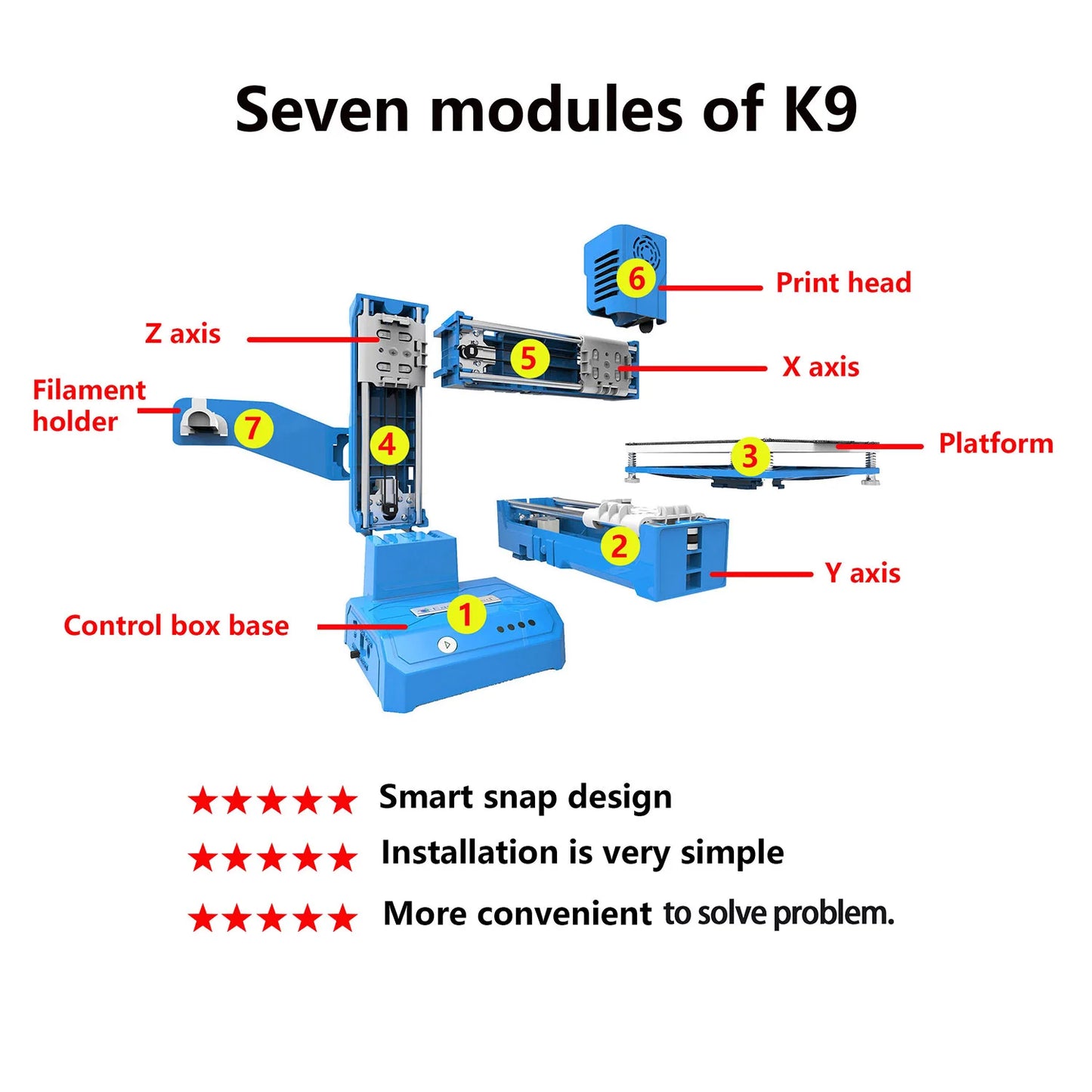30% OFF Your Order Until Sunday! Get Shopping!
CompactCraft 3D Printer
CompactCraft 3D Printer
Couldn't load pickup availability
Compact and Space-Saving: A 3D mini printer is much smaller and more portable than standard 3D printers, making it perfect for those with limited space. Whether you're using it in a small office, home, or school, it fits easily on desks or workstations without taking up much room.

Cost-Effective Entry into 3D Printing: Mini 3D printers are generally more affordable than larger models, making them a great option for hobbyists, students, or anyone looking to explore 3D printing without a big investment. They offer an accessible way to experiment with creating custom designs, models, or prototypes.

Ease of Use and Versatility: Many 3D mini printers are user-friendly and feature intuitive interfaces, making them great for beginners. Despite their small size, they can still print detailed models in a variety of materials, allowing you to create anything from simple prototypes to intricate miniatures and decorations.

Q: What Can I Make With A Mini 3D Printer?
A: Mini 3D printers can create a wide range of items, such as prototypes, miniatures, jewelry, keychains, home decor, and small mechanical parts. While they are typically smaller in size, you can still print detailed and precise models, making them ideal for crafting, designing, or prototyping on a smaller scale.
Q: Are Mini 3D Printers Suitable For Beginners?
A: Yes, many mini 3D printers are designed with beginners in mind. They often feature user-friendly interfaces, easy setup processes, and beginner guides or tutorials to help you get started. While they may have fewer advanced features compared to larger models, they still offer a great learning experience for those new to 3D printing.
Q: How Do I Maintain A Mini 3D Printer?
A: Maintaining a mini 3D printer typically involves regular tasks like cleaning the print bed, checking the nozzle for clogs, and ensuring the printer’s calibration is correct. You may also need to lubricate moving parts occasionally and replace the print bed surface or filament as needed. Following the manufacturer’s maintenance guidelines can help keep the printer in good working condition.
